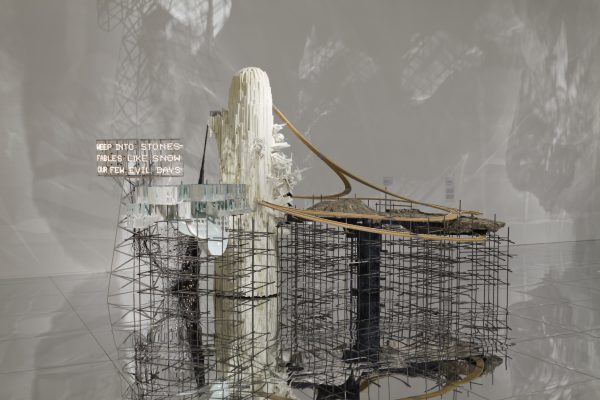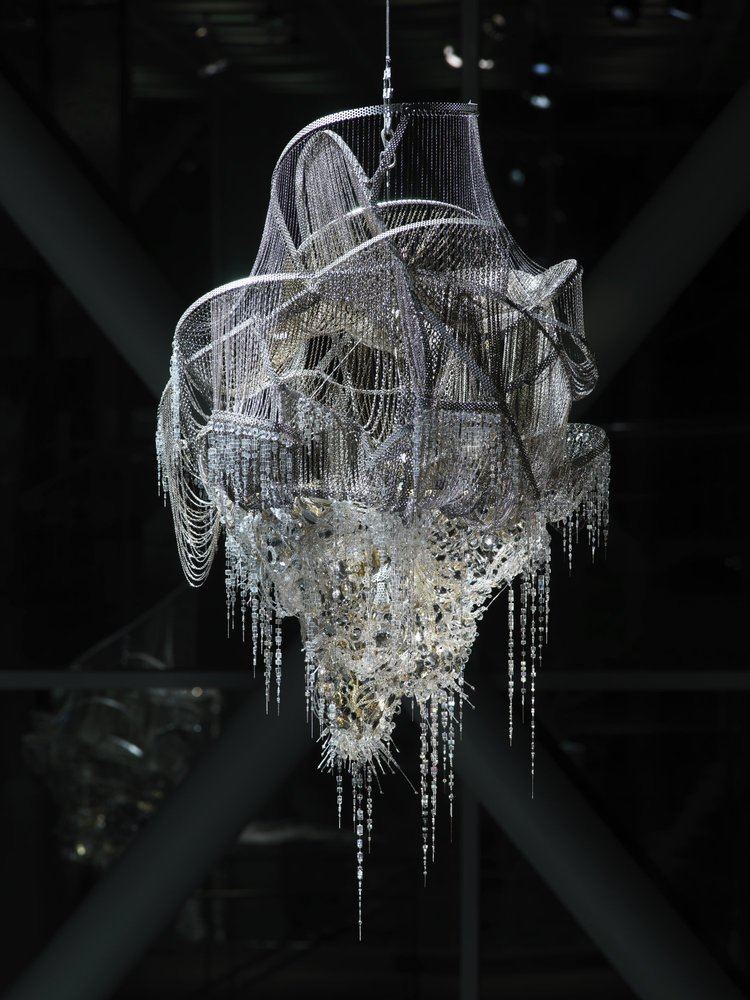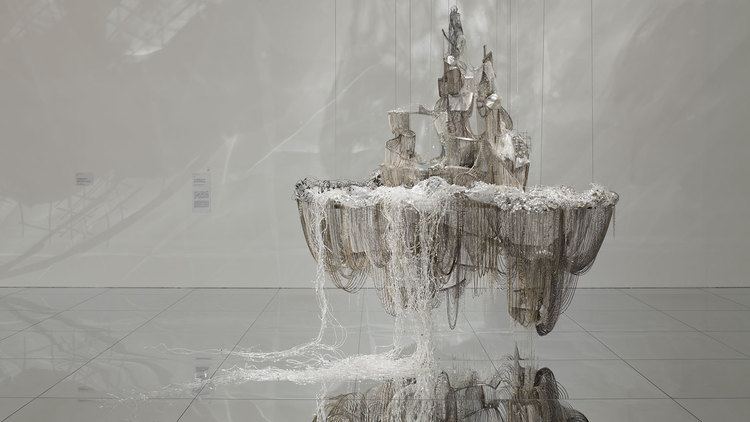Website www.leebul.com | Role Artist Name Lee Bul | |
 | ||
Artwork Majestic Splendor, The Secret Sharer | ||
Transformation exhibition lee bul interview
Lee Bul (Korean: 이불, born in Yeongju, Gyeongsangbuk-do, South Korea in 1964) is a contemporary sculpture and installation artist who appeared on the art scene in the late 1980s. Her work questions patriarchal authority and the marginalization of women by revealing ideologies that permeate our cultural and political spheres.
Contents
- Transformation exhibition lee bul interview
- Lee bul s labyrinth of infinity mirrors via negativa ii
- I Need You Monument
- Cyborg sculptures
- Biography
- Exhibitions
- Recognition and awards
- References

These themes take form in cold, mechanical sculptures and installations that reflect the ideals of a futuristic society. She has focused on shaping oppression of women, commercialization of sex, etc. that are intensified in a male-dominated society through various performances and objects. Since her introduction to the world of art, she has caught the eyes of the world of art all around the world with various ambitious artworks.

She presented an innovative performance using her own body and a three-dimensional textile artwork. Also, in an invitational exhibition of MoMA (The Museum of Modern Art) in the United States, she brought even the sense of rotten smell in process of time to the exhibition by using raw fish.

Lee bul s labyrinth of infinity mirrors via negativa ii
I Need You (Monument)

In the years between 1996 and 1999, Lee completed three mixed media installations that incorporate photographs of the artist with large scale inflatable forms. One of these installations, entitled I Need You (Monument) (1996), features a swelling, phallic object with a photograph of an orientalized and lingerie-clad Lee on the front. Beneath the mass lies an array of pedals for viewers to further aerate the object. Notable is Lee's juxtaposition of title and medium, which contrasts the vulnerability of inflatables with hegemonic ideas of what a monument is made of. Furthermore, her use of pedals draws attention to society's contribution to traditional ideals.
Cyborg sculptures
Created during the years of 1997 to 2011, Lee's series of cyborg sculptures are arguably her most well-known artworks. The series originated with Cyborg Red and Cyborg Blue, both of which were created in 1997–98. These works, as well as those that appear later in the series, feature decapitated anthropomorphic forms that are often missing an arm, leg, or both. Although the bodies read as female due to their hourglass shape, the idea of a cyborg transcends distinctions such as gender, race, and class. The artist has stated that the cyborg is a trope for "our fear and fascination with the uncategorizable, the uncanny."
Biography
In 1999, she achieved international recognition when she represented Korea in the Venice Biennale. Lee studied sculpture at Hongik University in Seoul and graduated in 1987. Her artworks mostly consist of installation pieces that involve the audience being placed into Lee's artwork.
Exhibitions
Lee Bul has had solo exhibitions worldwide including Live Forever which toured the New Museum of Contemporary Art, New York and The Power Plant, Toronto. She was selected as a finalist for the 1998 Hugo Boss Prize by the Guggenheim Museum, New York.
Other museums that have presented exhibitions of her work include Fondation Cartier, Paris; Domus Artium, Salamanca; Museum of Contemporary Art, Sydney; Japan Foundation, Tokyo; MAC, Musée d'Art Contemporain, Marseille; Le Consortium; Fabric Workshop and Museum, Philadelphia; Kunsthalle Bern, Switzerland; and the Museum of Modern Art, New York.
In March 2010, the Hara Museum ARC unveiled a permanent installation by Lee Bul entitled A Fragmentary Anatomy of Every Setting Sun. In February 2012, the Mori Art Museum, Tokyo, mounted a mid-career survey exhibition, the artist's largest exhibition to date.
